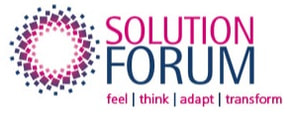|
No art? But still an artist! What is it that a man of such genius doesn’t actually know what the meaning of the craft he truly is a master of is? Doesn’t he know? Or does he know that he can’t know? Maybe it is a matter of knowing, or as I suggest, not-knowing. M.C. Escher can know what science is, because it is a set of rules and computable results logically connected, while art surely is not. Just think of Benoît Mandelbrot’s coastline question. The fractal theory is a beautiful example of how the reality or nature of something may not be grasped with simple, one-dimensional thinking and mathematical terms only. Approaching a coastline with linear thinking doesn’t work for the real nature of intricate detail of its shape.
Likewise, geometrical objects like straight lines, perfect circles or right angles are only logical notions of something not being displayed in nature. It seems to me that if we only think in patterns, it may be too simplified to make sense of the world around us. The Mindset When we transfer the notion of not-knowing to humans and human relations, then “not knowing” could be a basic and surprisingly useful mindset to deeply approach other people’s views and needs and be more empathetic. For me, empathy is the art of truly sensing and perceiving in order to find out that we never can truly know. The more we look, the closer we get, the more confusing and puzzling everything appears. Maybe, Mr. Mandelbrot would have agreed on that, too. Ignoring any nihilistic position, I deeply believe that this is what makes us truly human. We humans seem to be driven by the search for the perfect concept, that aren’t real, but they give us a sense of order, clarity, comfort, and relief. And it is exactly what they are meant to be. Our brain is a highly capable network of making sense of what is around us. And sometimes, like the masterpieces of M.C. Escher, our minds trick us. Therefore, our challenge is to balance our need for clarity, relief from ambiguity, and order with the knowledge that reality is not always what it seems to be, but rather a rational notion. Balancing, for me, is being adaptive and responsive to what is happening outside of our conceptions and to infinitely strive for the balance between the knowing, the rational mode, and the feeling and sensing aspect of how to encounter real phenomena. If we remain adaptive and continuously respond to what is surrounding us, then we can change, we can transform. The Humble Art for Leaders Yesterday, in a conversation with talented and experienced leader who is new in his role, I was pointing out how not knowing could extend the opportunities when talking to colleagues. First of all, having the mindset of not-knowing is a big challenge. If you are supposed to know, or even if you really do know, then it becomes an even bigger challenge. Especially as a leader, there are various situations when you know, because knowing is part of the role and expected from the staff and the organizational environment. So why pretend to not know? I would argue, because then you can offer a completely different attitude by introducing a significant new quality of intention and relation. Here, I like the notion of Humble Inquiry by Edgar Schein. The difference is the situational role you give to yourself, while still being the leader. It is the sense of interconnectedness and even dependence on the colleague in that very moment, that gives the conversation, the inquiry, or the statement a significantly more related and more human touch. Imagine the situation where you as a leader have to make a decision. By using not-knowing as a guiding principle of your conversation, the colleague is appreciated and valued for his or her contribution. The other person is automatically invited to engage in the conversation and to contribute with their own point of view. That is true empowerment, where bright eyes can emerge as a sign of confidence and trust. So, the next time you’re having a little chat or even a demanding situation with your colleague, try to recall the delicate art of not-knowing and have a close look on how this might affect the dialogue in a more appreciating and more balanced way between both of you. And maybe you think of some fabulous artwork by M.C. Escher, where he’s blending two aspects so smoothly and in such a persuasive way, that we almost believe those little illusions. Comments are closed.
|
AuthorTomas Horak Archives |
T +41 (0)78 628 18 00 | E [email protected] | A Robinienweg 23, CH–4153 Reinach | C © Solution Forum GmbH 2020

